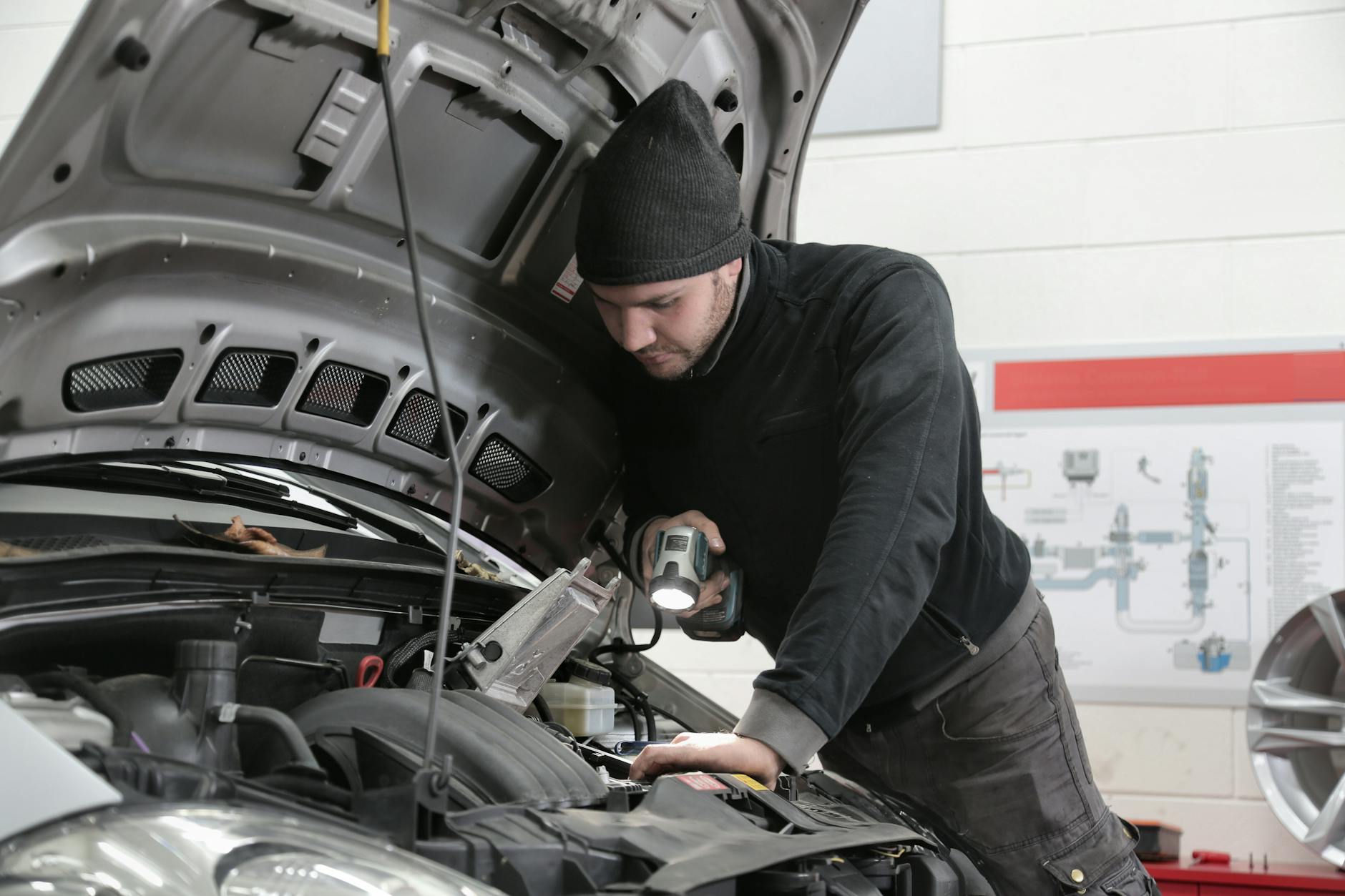
Introduction
In today’s fast-paced world, the evolution of smart technology has seamlessly extended into our vehicles. With this growing trend, transforming a regular car into a smart vehicle is no longer a luxury but a practical enhancement. Imagine having real-time traffic updates, hands-free calls, and advanced safety alerts right at your fingertips. Such features not only elevate your driving experience but also enhance safety and convenience.
By following this guide, you’ll learn how to integrate cutting-edge technology into your car and enjoy the myriad benefits of a smart vehicle. From simple gadget installations to comprehensive system upgrades, we’ll explore a range of options suitable for various budgets and technical expertise. Embrace this transformation, and you’ll revolutionize your driving experience, making every journey more connected and enjoyable. Let’s delve into how you can start this exciting journey towards a smarter vehicle.
Step 1: Assess Your Car’s Compatibility

Before diving into the transformation process, it’s essential to evaluate your car’s current setup to determine its compatibility with smart technology. Start by checking the existing ports and systems in your vehicle. Most modern cars come equipped with an OBD-II port, typically located under the dashboard, which allows for easy connection to various smart devices and diagnostic tools.
Additionally, inspect your car’s infotainment system. If it already supports Bluetooth, USB, or auxiliary inputs, you’re in luck, as these features can facilitate the integration of a range of smart gadgets. For older models, consider whether an upgrade to the head unit might be necessary to accommodate new tech. A quick consultation of your car’s manual or a visit to your manufacturer’s website can provide specific details about your model’s capabilities.
It’s also wise to research your car’s make and model online to see how other owners have successfully made similar upgrades. By understanding your car’s current tech readiness, you’ll be better prepared to select the appropriate smart features and devices that will make the transformation smooth and effective.
Step 2: Choose the Right Smart Technology

Once you’ve assessed your car’s compatibility, it’s time to select the smart technology that best aligns with your needs and preferences. The market is flooded with a variety of devices, each offering unique features to enhance your driving experience. Begin by identifying what aspects of smart technology are most important to you: navigation, entertainment, safety, or perhaps all three.
For drivers keen on navigation and real-time traffic updates, a GPS device with smart capabilities or a smartphone app that integrates with your car’s display could be an ideal choice. If safety is your priority, consider investing in advanced driver-assistance systems (ADAS) like lane departure warnings or forward collision alerts. Devices such as dash cams can also provide an added layer of security.
For those who value in-car entertainment, look for devices that support streaming services or integrate with voice assistants like Alexa or Google Assistant. Check for compatibility with existing systems to ensure a seamless integration. By carefully selecting the right technology, you can tailor your smart vehicle experience to meet your specific driving needs and preferences, making every journey more enjoyable and efficient.
Step 3: Install a Smart Infotainment System

Upgrading to a smart infotainment system can significantly enhance your vehicle’s entertainment and navigation capabilities. Begin by selecting a system that fits your car’s make and model. Many aftermarket options offer features like touchscreen displays, Bluetooth connectivity, and integration with Apple CarPlay or Android Auto, providing a seamless way to access your apps and media.
To install the system, first disconnect your car’s battery to ensure safety. Remove the existing head unit by carefully detaching the dashboard panels and unscrewing the mounting brackets. Once removed, connect the new infotainment system using the appropriate wiring harness. It’s crucial to follow the manufacturer’s instructions closely; this ensures all connections are secure and functioning properly.
If you’re not tech-savvy or uncomfortable with the installation process, consider seeking professional help. Many car audio specialists can install these systems efficiently, ensuring optimal performance. After installation, test all functions—from navigation to voice commands—to confirm everything is working smoothly. With a smart infotainment system in place, you’ll enjoy a more connected and entertaining driving experience, elevating your vehicle to new heights of convenience and functionality.
Step 4: Add Smart Safety Features

Enhancing your vehicle with smart safety features is an essential step in transforming it into a smart vehicle. These technologies not only increase security but also provide enhanced driver assistance for a safer driving experience. Begin by considering the integration of cameras and sensors that offer real-time feedback and alerts.
A rearview camera is a popular addition that aids in parking and reversing, reducing the risk of accidents. Many modern systems are equipped with parking sensors, which provide audible warnings when obstacles are detected. For a more comprehensive solution, consider installing a 360-degree camera system that gives a complete view of your surroundings.
Another valuable addition is blind spot detection. These sensors alert you to vehicles in your blind spots, helping prevent lane change collisions. Furthermore, forward collision and lane departure warnings can be integrated to provide alerts if you’re getting too close to another vehicle or unintentionally drifting out of your lane.
To ensure proper installation and functionality, follow the device instructions or seek professional assistance. By adding these smart safety features, you’ll enhance your vehicle’s security and driver assistance capabilities, making every journey safer and more confident.
Step 5: Implement Smart Climate Control

Upgrading to a smart climate control system can significantly enhance your vehicle’s comfort and energy efficiency. These systems allow you to maintain an optimal cabin temperature with minimal effort, making your driving experience more pleasant regardless of external weather conditions. Begin by exploring smart thermostats and climate control modules compatible with your vehicle’s existing HVAC system.
Many smart climate control systems can be controlled via smartphone apps, enabling you to adjust the temperature remotely. Imagine pre-cooling your car on a hot summer day or warming it up during winter—all before you even step inside. These features not only add convenience but also optimize energy consumption, as the system uses sensors to maintain efficient temperature levels.
When installing smart climate control, ensure that the new system integrates seamlessly with your car’s existing controls. Carefully follow the manufacturer’s installation instructions, or consider professional installation to guarantee proper functionality. Additionally, explore tips and tricks to maximize the efficiency of your new setup.
By implementing smart climate control, you’ll enjoy a more comfortable and energy-efficient ride, making your car truly feel like an extension of your smart home.
Step 6: Utilize Smartphone Integration

Integrating your smartphone with your car’s smart systems is a key step in creating a seamless, connected experience. This integration allows you to control and access various features directly from your phone, enhancing both convenience and functionality. Begin by ensuring your vehicle’s infotainment system supports smartphone connectivity options such as Apple CarPlay or Android Auto.
These platforms enable you to mirror your smartphone’s interface on the car’s display, giving you access to apps, navigation, music, and more without needing to touch your phone. This not only promotes safer driving by reducing distractions but also simplifies managing your media and communication on the road. To get started, connect your smartphone via USB or Bluetooth, and follow the prompts on your vehicle’s display to complete the setup.
Beyond infotainment, consider apps that connect with your smart safety and climate control systems, allowing remote control and monitoring. Apps like these can provide notifications about your vehicle’s status or let you adjust climate settings from afar. By utilizing smartphone integration, you enhance connectivity, making your car an extension of your digital life.
Conclusion
Transforming your vehicle into a smart car involves several key steps: assessing compatibility, selecting the right technology, installing a smart infotainment system, adding safety features, implementing climate control, and integrating your smartphone. Each step brings unique benefits, from enhanced safety and comfort to improved connectivity and convenience. By embracing these innovations, you not only elevate your driving experience but also make your journeys more efficient and enjoyable.
Take action today to turn your car into a smart vehicle and enjoy the advanced features that modern technology offers. Whether you’re a tech enthusiast or simply looking to enhance your daily commute, these upgrades are a worthwhile investment in your car and lifestyle.





